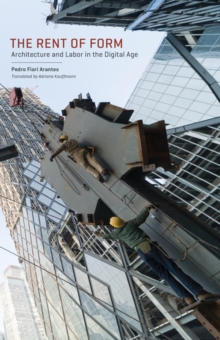
Assembly by Design : The United Nations and Its Global Interior Hardback
by Olga Touloumi
Part of the Buell Center Books in the History and Theory of American Architecture series
Hardback
Description
How the United Nations headquarters became the architectural instrument and broadcast medium of global diplomacy For almost seven years after World War II, a small group of architects took on an exciting task: to imagine the spaces of global governance for a new political organization called the United Nations (UN).
To create the iconic headquarters of the UN in New York City, these architects experimented with room layouts, media technologies, and design in tribunal courtrooms, assembly halls, and council chambers.
The result was the creation of a new type of public space, the global interior.
Assembly by Design shows how this space leveraged media to help the UN communicate with the world.
With its media infrastructure, symbols, acoustic design, and architecture, the global interior defined political assembly both inside and outside the UN headquarters, serving as the architectural medium to organize multilateral encounters of international publics around the globe.
Demonstrating how aesthetics have long held sway over political work, Olga Touloumi posits that the building framed diplomacy on the ground amid a changing political landscape that brought the United States to the forefront of international politics, destabilizing old and establishing new geopolitical alliances. Uncovering previously closed institutional and family archives, Assembly by Design offers new information about the political and aesthetic decisions that turned the UN headquarters into a communications organism.
It looks back at a moment of hope, when politicians, architects, and diplomats—believing that assembly was a matter of design—worked together to deliver platforms for global democracy and governance.
Information
-
Pre-Order
- Format:Hardback
- Pages:312 pages, 106 black and white photos and 13 color plates
- Publisher:University of Minnesota Press
- Publication Date:10/09/2024
- Category:
- ISBN:9781517913328
Other Formats
- Paperback / softback from £26.15
Information
-
Pre-Order
- Format:Hardback
- Pages:312 pages, 106 black and white photos and 13 color plates
- Publisher:University of Minnesota Press
- Publication Date:10/09/2024
- Category:
- ISBN:9781517913328










